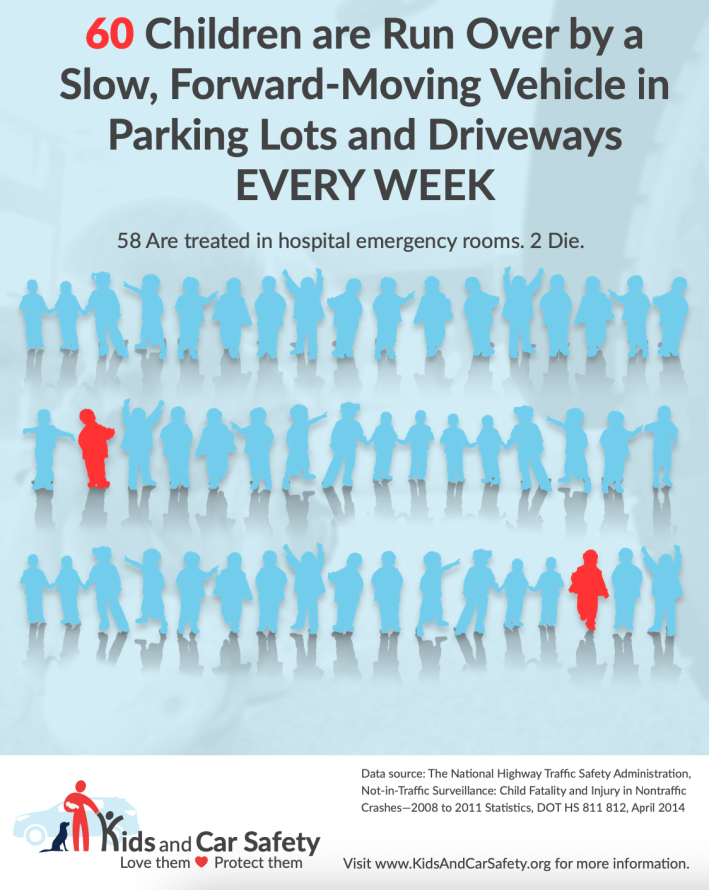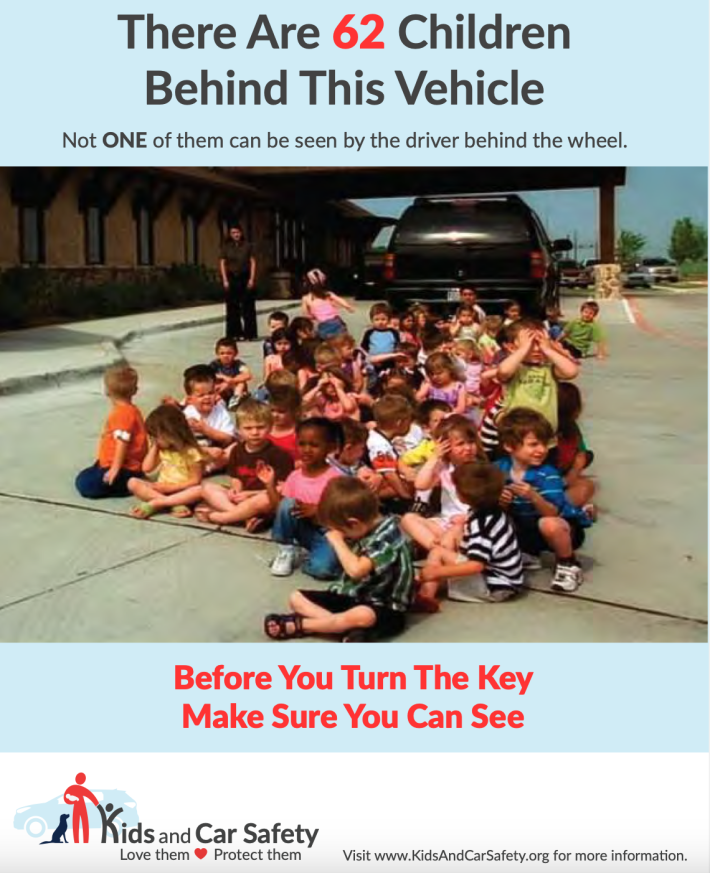Why Does the Vision Zero Movement Stop At the Edge of the Road?
U.S. car crash deaths are nearly 10 percent higher if you count collisions that happen just outside the right of way. So why don't off-road deaths get more air time among advocates?
8:09 AM EDT on April 18, 2024
The number of people who died in car crashes outside traditional roadways soared 26 percent in a single year, and included more than a thousand people outside motor vehicles. Because of where they died, though, some fear these fatalities won't count in the minds of policymakers tasked with achieving Vision Zero — or even the safety advocates who seek to hold them accountable.
According to the latest report from the National Highway Traffic Safety Administration, a shocking 3,990 people died in car crashes that occurred outside of the traditional transportation space in 2021, the last year for which data is available. One-quarter of those people were outside vehicles, including, pedestrians, cyclists, wheelchair users, and even children simply wishing their parents goodbye before they were accidentally run over by the caregivers who loved them most; all lost their lives after they were struck by drivers on private property, like parking lots, driveways, drive-thrus, and private roads.
Put another way: U.S. car crash deaths, which numbered 42,939 in 2021, were at least 9.3 percent higher that year than most Vision Zero advocates or safety officials claimed — if they had only considered the people who died on private property, often mere feet from where the formal right-of-way ends.
Even worse, some advocates say that because NHTSA's estimates are extrapolated from just a handful of states that routinely report their non-traffic crashes to the agency, those numbers are almost certainly a significant undercount. And because regulators and Vision Zero advocates tend not to count off-road fatalities when they describe the deadly toll of "traffic" violence, solutions specific to non-roadway contexts are being overlooked, even as some evidence suggests those same crashes disproportionately impact small children.
"We’ve been trying to get everybody — not just NHTSA — to look at non-traffic deaths the same way we look at traffic deaths," said Amber Rollins, director of the advocacy group Kids and Car Safety. "We see all these reports that pedestrian deaths are up, but no one’s talking about non-traffic deaths. It shouldn’t matter where you’re run over and killed; your death should count."

Rollins says that the 26-percent fatality increase is "extremely disheartening," and that there are clear structural reasons why non-traffic crashes are so often overlooked — even if none of those reasons are acceptable.
Before Congress mandated that they create the Non-Traffic Surveillance System in 2007, federal regulators didn't regularly track any off-road fatalities — and they still don't always enthusiastically claim responsibility for understanding their root causes, never mind ending them.
When asked if NHTSA had any hypotheses as to why off-road car crashes had jumped so significantly between 2020 and 2021, a spokesperson for the agency told Streetsblog that its "mission is preventing and mitigating unintentional crashes on our nation’s roads and highways," (emphasis ours), and that "the collection and analysis of crash data can reveal trends among certain types of crashes that can help inform the development of countermeasures. ... However, [this analysis] does not necessarily reveal crash causation underlying why certain types of crashes are trending higher in frequency."
At the state and local level, jurisdictions still don't have strong reporting requirements to standardize off-road crash data, analyze it for trends that might suggest solutions, or make that information regularly available to the public. For all its flaws, the Fatality and Analysis and Reporting System for U.S. roads is at least somewhat easily searchable, and NHTSA at least delivers preliminary estimates of roadway death totals just a few months after the calendar year ends; Non-Traffic Surveillance data, by contrast, is buried in difficult-to-open file formats on obscure government websites, and only infrequently analyzed, despite a mandate from congress that the agency issue biennial reports.
Data via NHTSA. Note: Motorcyclists are not included in non-occupant category.
To complicate matters even more, local jurisdictions may struggle even to distinguish between traffic crashes that involve public property — say, a car veering off a road and into a person walking in a parking lot, which is classed as a roadway crash because the "first harmful event" happened when the driver lost control in his lane — and true non-traffic crashes — like a car in that same parking lot backing into that same walker, without ever entering the public right of way.
Rollins says the value of human lives can easily be erased by a crash reporting system not designed with non-roadway contexts in mind, even as thousands of people die in those spaces every year.
"If a child is backed over in a driveway, there’s not necessarily a box to check on a police report for that," she added. "And then states don't always require corresponding officers to turn in those reports to [state highway offices,] and the data’s not always reported to the federal department of transportation."
That dearth of good data has forced her organization to pay media monitoring companies to research thousands of non-traffic incidents every year on their own, though she recognizes that "not every crash makes the five o'clock news" — especially the many automotive deaths that don't involve a crash, like hot car deaths, drownings in vehicles, and carbon monoxide poisoning, which the NTS reports on even more rarely than collisions. And as a result, Kids and Cars have often found it hard to convince agencies and other advocates to make non-traffic crash safety a Vision Zero priority, even when they're fighting for complementary solutions.

Rollins says a particularly "shattering" blow to their cause came out of the Infrastructure Investment and Jobs Act, which included a much-applauded provision to possibly require pedestrian automatic emergency braking systems on all new cars — but the rule-making process specified that those systems need only work at speeds of 6.2 miles per hour or more, far faster than the velocity of most frontover and backover crashes that happen in American driveways. Few "street" safety advocates, though, critiqued that shortcoming of the rule — or even argued that NHTSA should use smaller crash test dummies to reflect that most frontover and backover victims are under three years old, according to Kids and Cars databases. (Rollins says NHTSA's standard child dummy is scaled to the proportions of an average 6 year old.)
"Even our really close safety partners did not mention these issues in their comments," Rollins adds. "They’re missing the mark when it comes to non-traffic; we’ve really got to make some noise about it."
In addition to fighting for better vehicle safety technology, Rollins wishes other advocates would acknowledge the role of vehicle bloat — and its attendant phenomenon, blind-spot bloat — specifically in non-traffic crashes, and how the swelling size of the average SUV is affecting crash severity even when drivers are moving at a crawl. To address that, her organization is hoping to reintroduce the Standards to Prevent Frontovers Act, which "requires a perception zone in front of a motor vehicle that enables the driver of the motor vehicle to detect, and appropriately respond to, objects in front of the motor vehicle" — and specifies that automakers can accomplish this with technology or by simply making cars smaller.
She also wishes transportation officials would be more proactive about designing parking lots for pedestrian safety — and other advocates have argued that limiting parking lots and driveways, period could further minimize crashes that occur in them.
Whatever steps we take, Rollins says it's critical that the systemic approach outlined in the National "Roadway" Safety Strategy extend to roadway-adjacent spaces, too — and that advocates extend their fight against "traffic" violence to cover automotive violence more broadly.
"A vehicle killing somebody is a vehicle killing somebody," she added. "And even in the most educated and safety-conscious family, these things can happen, because they happen so fast... We can’t only rely on behavior changes and people understanding these risks to prevent them. The best way is to design away the dangers."
Editor's note: a previous version of this story indicated that Congress mandated biannual reports from the Non-Traffic Surveillance System. They actually mandated biennial reports.
Kea Wilson has more than a dozen years experience as a writer telling emotional, urgent and actionable stories that motivate average Americans to get involved in making their cities better places. She is also a novelist, cyclist, and affordable housing advocate. She previously worked at Strong Towns, and currently lives in St. Louis, MO. Kea can be reached at kea@streetsblog.org or on Twitter @streetsblogkea. Please reach out to her with tips and submissions.
Read More:
Stay in touch
Sign up for our free newsletter
More from Streetsblog USA
Kiss Wednesday’s Headlines on the Bus
Bus-only lanes result in faster service that saves transit agencies money and helps riders get to work faster.
Freeway Drivers Keep Slamming into Bridge Railing in L.A.’s Griffith Park
Drivers keep smashing the Riverside Drive Bridge railing - plus a few other Griffith Park bike/walk updates.
Four Things to Know About the Historic Automatic Emergency Braking Rule
The new automatic emergency braking rule is an important step forward for road safety — but don't expect it to save many lives on its own.
Who’s to Blame for Tuesday’s Headlines?
Are the people in this photo inherently "vulnerable", or is this car just dangerous?





